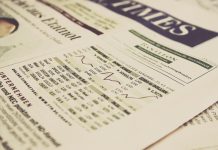
Singapore cut its 2020 economic forecasts for the third time after the contraction it recorded in the first quarter of the year, according to official data.
The Ministry of Trade and Industry reported that the Singapore economy may fall by between 4.0% and 7.0% this 2020.
This is considered the third official alteration in Singapore's economic forecasts this year as the country grapples with the coronavirus outbreak. The last forecast was for a gross domestic product contraction of between 1.0% and 4.0%.
According to the ministry, since revealing its last economic prediction in March, “the disruptions to economic activity in major economies around the world have been more severe than expected.”
The ministry pointed out that coronavirus lockdown measures that aim to curb the coronavirus disease damaged major economies in countries such as the US, Europe, and China. The ministry also said the damage will linger even after countries gradually reopen economies since more waves of infections could take place.
This means that outward-oriented industries in Singapore such as wholesale trade, manufacturing, and transportation and storage would face difficulties. Moreover, consumer-facing companies in retail and food industry suffered from restrictions, the ministry noted.
“Notwithstanding the downgrade, there continues to be a significant degree of uncertainty over the length and severity of the COVID-19 outbreak, as well as the trajectory of the economic recovery, in both the global and Singapore economies,” it said.
Better than preliminary estimates
The ministry explained that the slash in economic prediction came as the Southeast Asian economy reported a 0.7% contraction in the first quarter from a year ago. This is more acceptable than the official preliminary estimates of a 2.2% fall in GDP and the 1.5% contraction forecast by economists in a Reuters poll.
Singapore’s economy fell by 4.7% on a quarterly basis. Here is how different sectors fared in the first quarter:
- Manufacturing jumped by 6.6% compared with a year ago;
- Accommodation and food services plunged 23.8% year over year;
- Transportation and storage fell 8.1% compared with the first quarter last year;
- Finance and insurance rose 8.0% from last year.
Singapore’s government carried out partial lockdown measures called a “circuit breaker” in early April. This involves temporary closures of schools and most workplaces. The measures are expected to ease next month.
The Singapore government laid out three stimulus packages and some support measures to businesses when the circuit breaker was extended beyond the first one month.
The country’s Deputy Prime Minister and Finance Ministry Heng Swee Keat will make announcements about further assistance for businesses and households later on Tuesday.
Coronavirus cases in Singapore
Singapore had one of the highest tallies of coronavirus cases in Asia. The health ministry reported 31,960 coronavirus cases in Singapore, including 23 deaths.
Minister for National Development Lawrence Wong admitted during the first week of May that they still have a lot to do. “This is still the first half of the marathon,” the minister said during an interview on CNBC’s “Squawk Box Asia.”
Wong co-heads Singapore’s task force to fight the virus. He said the country expects high numbers of new cases due to “extensive testing” in dormitories that house migrant workers.
These groups are mostly men from other countries in Asia. They accounted for 87.6% of the total 19,410 confirmed cases in Singapore as of Tuesday, according to the health ministry. The cases in those dormitories caused the rise in the number of infections in Singapore over the past month.
“We’re testing not only the workers who are reporting sick — for which the numbers are not very large,” he said. “But we’re doing very extensive testing on workers in the dormitories who are well, who are asymptomatic,” said Wong, who is also Singapore’s second minister for finance.






